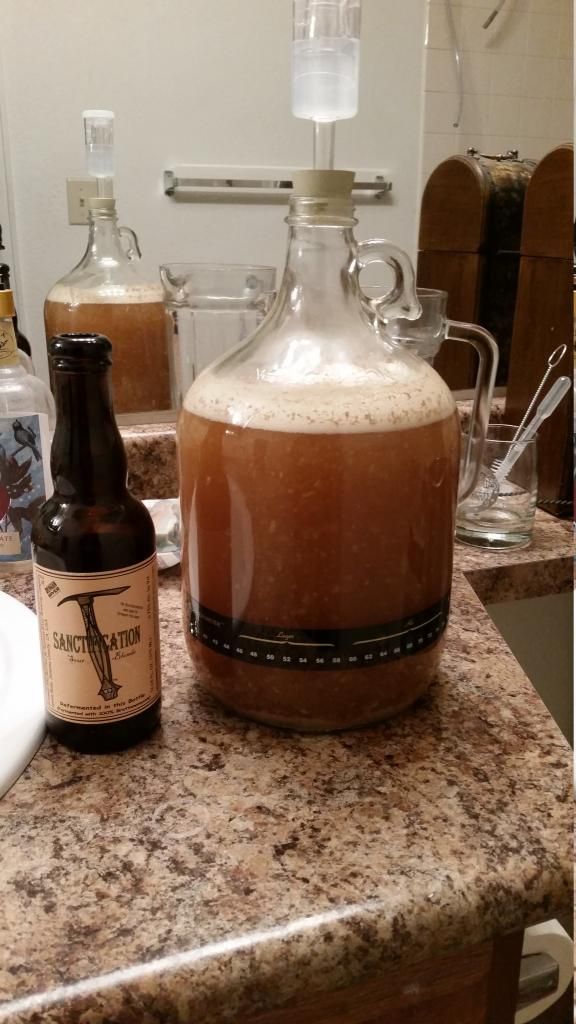For anyone "chomping at the bit" to produce a sour beer I offer this: In the book, Michael alludes to his opinion that the quickest way to a reasonably complex sour beer is to sour the wort then 100% brett ferment. Boom. Since having read that I have brewed three ten gallon batches this way and served each of them within 30 days of brew day. Each of these beers has been complex, sour, fruity and delightful, and two of the three have been VERY well received at two local fests.
The brett starter for the primary ferment starts ten days to two weeks before pitching. Each time I've stepped up to something like 30-50 ml of well-caked slurry. Three days out I made a lacto starter from 1.5 L of 1.030 wort to which I added a couple of handfuls of crushed malt. Brewed up a simple 1.050 wort, chilled it and pitched the lacto starter into 110-115 degree wort in the boil kettle. Put the lid on and let it go overnight and BY THE NEXT MORNING was at a clean, lacto-tart pH of 3.8. Boiled with a tiny (less than 5 IBU) bittering addition. Oxygenated and pitched the brett and let it run from 64 up to 74. Dry hopped at 2 oz per 5 gallons. Kegged when clear (or nearly) and served.
Don't ask for strains, malt bill or hop schedule, this is a process not a recipe. But the beer will be nicely tart and very fruity (the souring provides a substrate from which the brett can produce its fruity esters).
Start today and you can have a complex sour beer with brett fruitiness within six weeks. Don't expect it to last long.































![Craft A Brew - Safale S-04 Dry Yeast - Fermentis - English Ale Dry Yeast - For English and American Ales and Hard Apple Ciders - Ingredients for Home Brewing - Beer Making Supplies - [1 Pack]](https://m.media-amazon.com/images/I/41fVGNh6JfL._SL500_.jpg)


























 Not really trying to be judgmental - more like trying to figure out if the book would have any value to me..
Not really trying to be judgmental - more like trying to figure out if the book would have any value to me..